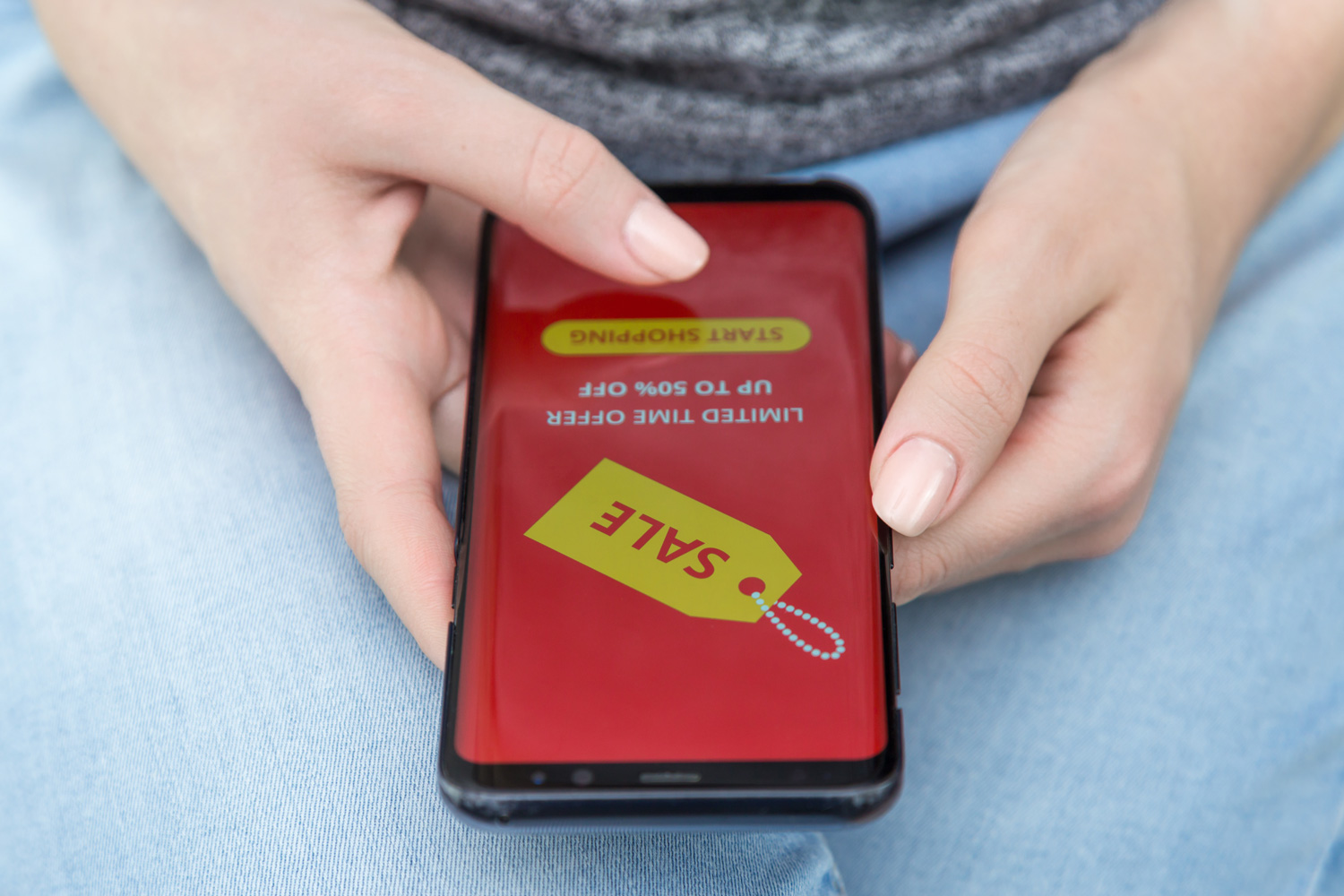4 Types Of E-Commerce Shoppers And How To Win Them Over
Asia accounts for more than half of e-commerce sales across the globe. But don’t make the mistake of assuming every online shopper is the same.
- From impulse buyers to bargain hunters to loyal customers, each shopper type has different triggers to purchase. Understanding these triggers is your key to closing sales.
- Analytics can help you understand which buyers are converting, and how you can refine your online sales strategy.
- Tailoring your strategies and tactics based on shopper type, such as personalized emails, competitive pricing, and loyalty programs, can help you multiply the chances of success.
Have you ever thought about your shopping habits? Are you the type to jump on a flash sale, or do you like spending hours comparing products? We map out a few online buyer personas we’ve encountered, and delve into what pushes them to check out their carts.
Online shoppers have many faces
Everyone shops differently. The same person may even behave differently when shopping for groceries versus shopping for beauty or fashion products. But there are predictable patterns that can help your business understand what online shopping behaviors you’re dealing with, and how you can reach and sell to each shopper effectively.
Here are the four most common types of online shoppers in Asia:
1. The impulse buyer
Impulse buyers are exactly what they sound like – they make spontaneous, unplanned purchases on a whim. These customers tend to act on emotions and make purchases without thinking too hard. Often, they get caught up in a sense of urgency.
Impulse buyers are exactly what they sound like – they make spontaneous, unplanned purchases on a whim. These customers tend to act on emotions and make purchases without thinking too hard. Often, they get caught up in a sense of urgency.

Tactics to win over impulse buyers:
Types of products that attract impulse buyers:
- Use countdown timers to show the remaining time left for a promotion. This urgency spurs them to check out fast.
- Create eye-catching ads to grab their attention. Words like "bestseller" or "popular" can help you create a perception of desirability and social proof.
- Use emotional messaging in ads, which can influence impulse buyers to make a spontaneous purchase.
Types of products that attract impulse buyers:
- Personal purchases in categories such as beauty, fashion, and luxury.
2. The cautious shopper
On the opposite end of the shopping spectrum, we have the cautious shopper. This type of online shopper likes to do their homework on all their options before deciding on a purchase.
Cautious shoppers want to ensure they’re getting exactly what they want, at the price they’re willing to pay. They appreciate detailed and transparent product information to support their research process.
On the opposite end of the shopping spectrum, we have the cautious shopper. This type of online shopper likes to do their homework on all their options before deciding on a purchase.
Cautious shoppers want to ensure they’re getting exactly what they want, at the price they’re willing to pay. They appreciate detailed and transparent product information to support their research process.

Tactics to win over cautious shoppers:
- Provide comprehensive product information. Don’t forget to include specifications, images (both lifestyle images and product photos), and even videos covering features, benefits, and usage instructions.
- Display customer reviews and ratings to build trust and reduce purchase anxiety.
- Offer comparison tools to help them compare different products side-by-side.
- Partner with a series of influencers who can help you build social proof and customer trust by sharing and detailing their personal experiences with the products.
Types of products that attract cautious buyers:
- Tech-oriented products such as consumer electronics (i.e. laptops, smartphones, and even high-performance headsets)
- Hobby-related products like musical instruments (electric guitars or electronic keyboards) or specialized, niche products
3. The bargain hunter
We all know the “bargain hunter” type – these online shoppers always look for the best deals and discounts, and often go for the cheapest option. They compare prices across multiple sites to find the best value for their money.
While you may find it more straightforward or easy to attract bargain hunters, retaining them can be quite a challenge. The secret is to convert their focus from price sensitivity to securing the best value.
We all know the “bargain hunter” type – these online shoppers always look for the best deals and discounts, and often go for the cheapest option. They compare prices across multiple sites to find the best value for their money.
While you may find it more straightforward or easy to attract bargain hunters, retaining them can be quite a challenge. The secret is to convert their focus from price sensitivity to securing the best value.

Tactics to win over bargain hunters:
Types of products that attract bargain hunters:
- Any opportunity to save money will attract these buyers. Discounts, coupons, promotions, and loyalty rewards all work.
- Limited-time offers and exclusive deals grab their attention and compel them to buy.
- Convert bargain hunters into return customers by convincing them your product is worth the price. Demonstrate the benefits you deliver.
- Get them to stay through loyalty rewards or perks – free shipping is a tried-and-tested trick to win over a bargain hunter.
Types of products that attract bargain hunters:
- Staple products like toilet paper or floor cleaners – everyday, basic things that perform practical functions
4. The loyal customer
In a market with options aplenty, it’s a tough feat to win loyal customers. These buyers are valuable because they make repeat purchases over their lifetime.
Loyalty is formed when customers form trust and a strong emotional connection with your brand. Inertia is part of what keeps these buyers from switching brands, but even the smallest misstep can cause your loyal customers to rethink their preferences.
In a market with options aplenty, it’s a tough feat to win loyal customers. These buyers are valuable because they make repeat purchases over their lifetime.
Loyalty is formed when customers form trust and a strong emotional connection with your brand. Inertia is part of what keeps these buyers from switching brands, but even the smallest misstep can cause your loyal customers to rethink their preferences.

Tactics to win over loyal customers:
Types of products that attract loyal customers:
- Differentiate your business through excellent customer service.
- Create quality products that shoppers can’t get anywhere else.
- Design loyalty programs that reward repeat consumers, and provide exclusive previews or member-only offers that make them feel valued and special.
- Create personalized experiences like tailored recommendations and targeted marketing.
Types of products that attract loyal customers:
- Consumable items (meaning products that consumers use repeatedly) like personal care or beauty products, stationery, food, and household goods.
Know who you attract – and how
It’s one thing to know these different types of online consumer shopping habits and behaviors; it’s another to realize which shoppers are actually engaging with your brand. Leveraging data and analytics is crucial for understanding your prospects and optimizing your sales strategy.
Here are three key steps to help you refine your online sales and marketing:
1. Track user journeys
You can also identify specific patterns tied to certain online shopper types, and figure out how to capture their attention more effectively.
- Use heatmaps to gain a visual understanding of user behavior on your site. Heatmaps show you where users are clicking and scrolling on your site, giving you a visual representation of how users interact with your website. You can then identify areas where users struggle to find what they're looking for, or where they're abandoning the checkout process.
- Analyze conversion rates at different stages of the checkout process. This helps you pinpoint areas where users are dropping off, and make improvements to the checkout process. For instance, you can simplify your checkout flow or offer more payment options.
You can also identify specific patterns tied to certain online shopper types, and figure out how to capture their attention more effectively.

2. Maintain customer records
Don’t forget to regularly evaluate and refine shopper segments to ensure they remain relevant and actionable.
- Create detailed customer profiles. A loyalty program is a great first step in gathering shopper information like names, email addresses, and birthdates. Combine data from past interactions like purchase history and browsing behavior to create a holistic view of each customer.
- Segment customers into shopper types. Start categorizing your customers into shopper types based on their online behavior. Use this segmentation to target the right people with personalized marketing campaigns and product recommendations.
Don’t forget to regularly evaluate and refine shopper segments to ensure they remain relevant and actionable.

3. Tailor communications
- Use customer data to personalize marketing messages and offers. Based on the identified shopper type, you can now offer discounts, promotions, and loyalty rewards that are more relevant to each customer.
- Send targeted emails based on preferences and purchase history. Aside from segmenting customers according to shopper types, you can segment them based on their interests, preferences, and purchase history. With this information, you can then send personalized emails with relevant content, such as product recommendations, and special offers.
Keep learning about your consumers
Knowing and understanding different online shopper behaviors is key to shaping your e-commerce strategy. At the same time, there are larger consumer trends that you shouldn’t overlook, such as the rise of the Discovery Generation.
Looking for more tips on e-commerce in Asia Pacific? Visit our e-commerce center here.
***

















 The Latest
The Latest